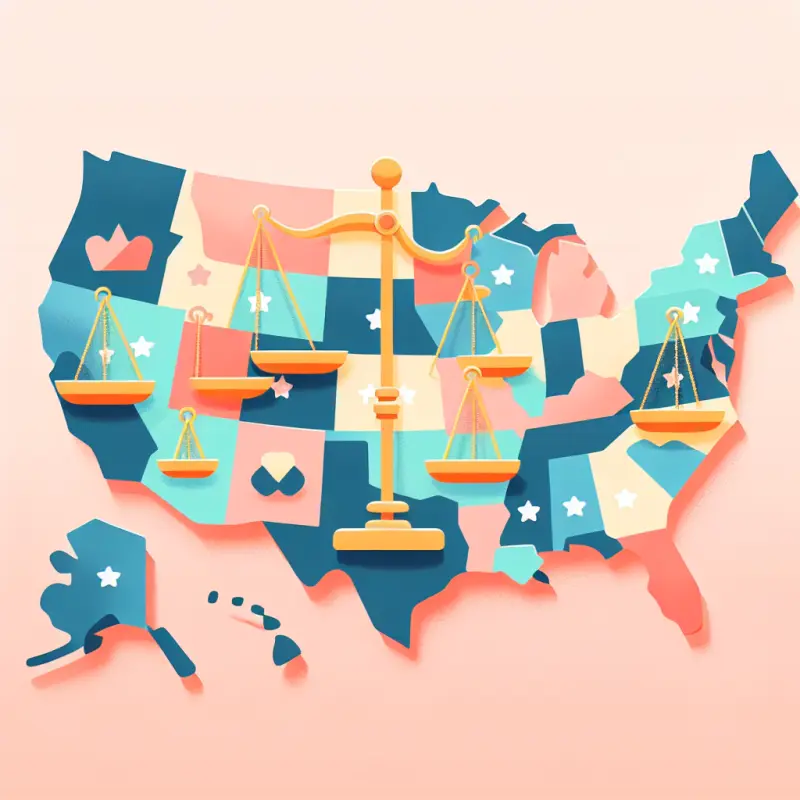Abortion Laws in the USA: State Differences and Access

Abortion Laws in the USA: State Differences and Access
Introduction
Abortion has long been one of the most contentious issues in American politics, consistently polarizing public opinion and shaping legislative agendas. The legal landscape surrounding abortion rights has evolved significantly since the landmark 1973 Supreme Court decision in Roe v. Wade, which recognized a woman's constitutional right to terminate a pregnancy. However, with the Supreme Court's recent decision to overturn Roe v. Wade in June 2022, the legal framework has shifted dramatically, granting individual states the authority to regulate abortion laws and access.
This article aims to explore the current state of abortion laws across the United States, highlighting the significant differences between states and the implications for access to abortion services. We will delve into various aspects, including restrictive measures, protections, and the broader impact on women's health and rights.
The Historical Context of Abortion Laws
The Pre-Roe Era
- Prior to the 1973 Roe v. Wade decision, abortion laws were primarily determined by individual states, with most states imposing stringent restrictions or outright bans.
- Illegal abortions were common, often leading to unsafe procedures and significant health risks for women.
Roe v. Wade and Its Aftermath
- Roe v. Wade established the constitutional right to an abortion, fundamentally changing the legal landscape.
- The decision introduced the trimester framework, allowing states to impose varying levels of regulation based on the stage of pregnancy.
The Shift Post-Roe
- The overturning of Roe v. Wade in 2022 returned the power to regulate abortion to individual states, resulting in a patchwork of laws and access across the nation.
State Differences in Abortion Laws
States with Restrictive Abortion Laws
Trigger Laws
- Definition: Laws designed to ban abortion automatically upon the overturning of Roe v. Wade.
- States: Texas, Louisiana, Kentucky, and others enacted trigger laws, resulting in immediate or near-immediate bans following the Supreme Court decision.
Gestational Limits
- Many states have enacted laws that limit abortions to the early stages of pregnancy, often around 6 to 20 weeks.
- Example: Georgia's "heartbeat bill" bans abortions after the detection of a fetal heartbeat, typically around six weeks of pregnancy.
Total or Near-Total Bans
- Some states have enacted laws that ban almost all abortions, with limited exceptions, such as to save the life of the mother.
- Example: Alabama's law, one of the most restrictive, bans nearly all abortions without exceptions for rape or incest.
States with Protective Abortion Laws
Codification of Roe
- States like New York and Illinois have codified the protections of Roe v. Wade into state law, ensuring the right to abortion regardless of federal changes.
Expanded Access
- Some states have taken steps to expand access by reducing barriers such as mandatory waiting periods, ultrasound requirements, and parental consent for minors.
- Example: California provides public funding for abortion services and has laws protecting access and providers.
The Role of State Courts
- State supreme courts have played a crucial role in interpreting state constitutions in ways that protect or restrict abortion rights.
- Example: Kansas, where the state Supreme Court ruled that the state constitution protects abortion rights, ensuring access despite legislative attempts to restrict it.
Access to Abortion Services
Geographic Disparities
- Access to abortion services varies widely, with many rural and conservative areas facing significant barriers.
- "Abortion deserts," or areas with no nearby clinics, are prevalent, forcing individuals to travel long distances for care.
Economic Barriers
- The cost of abortion services, coupled with travel and accommodation expenses, poses a significant barrier for low-income individuals.
- State restrictions on public funding for abortions further exacerbate these financial challenges.
Impact of Telemedicine
- The COVID-19 pandemic accelerated the use of telemedicine, including for medication abortions, offering a potential solution to access issues.
- However, state laws vary significantly in allowing telemedicine for abortion, with some states imposing bans or restrictions.
The Broader Implications
Impact on Women's Health
- Restrictive laws can lead to delays in care, increasing health risks for individuals seeking abortions.
- Limited access may push some individuals to seek unsafe or illegal abortions, with significant health implications.
Socioeconomic and Racial Disparities
- Restrictions disproportionately affect marginalized communities, including low-income individuals and people of color, exacerbating existing inequalities.
Legal and Political Battles
- The shifting legal landscape has sparked numerous legal challenges, with ongoing court battles likely to shape future access to abortion.
- State elections and legislative sessions continue to be battlegrounds for abortion rights, with significant implications for future policies.
Conclusion
The landscape of abortion laws in the United States is marked by significant state-by-state differences, resulting in varied levels of access and rights for individuals seeking abortion services. The recent overturning of Roe v. Wade has further entrenched these disparities, highlighting the critical role of state governments and courts in shaping access to reproductive healthcare. As legal and political battles continue, the future of abortion rights in the United States remains uncertain, with profound implications for women's health, autonomy, and equality.
The ongoing debate over abortion underscores the need for informed public discourse and policy-making that prioritizes the health and rights of all individuals. It remains imperative to monitor developments and advocate for access to safe, legal, and equitable reproductive healthcare across the nation.